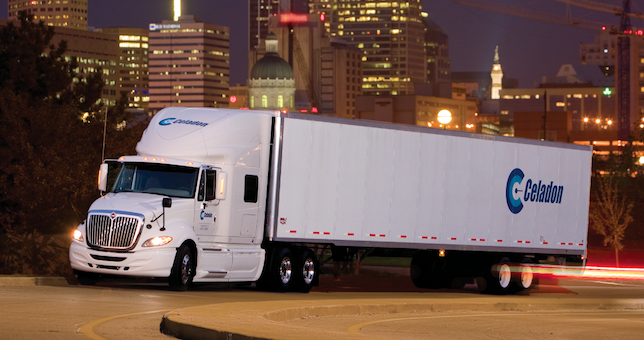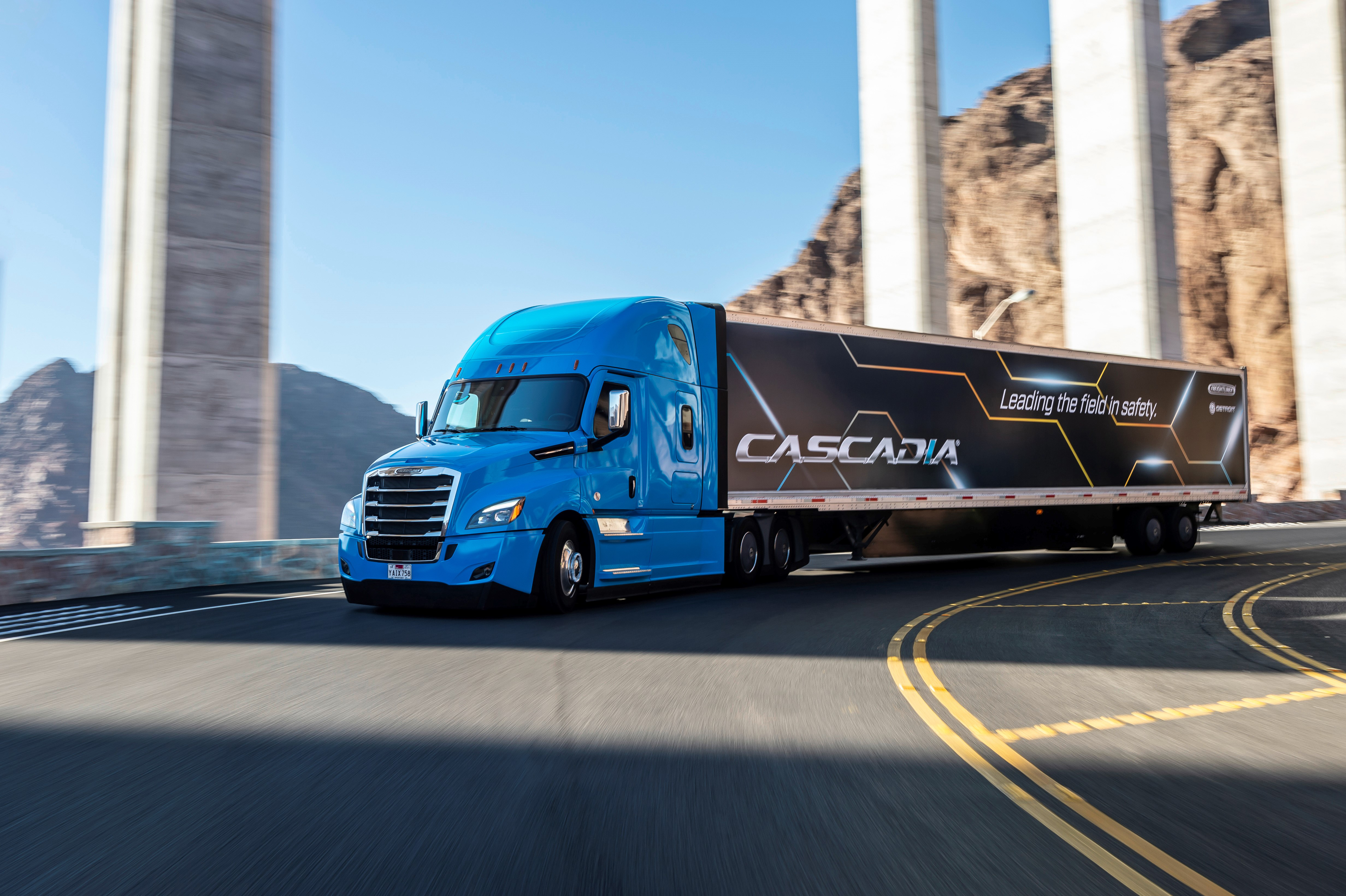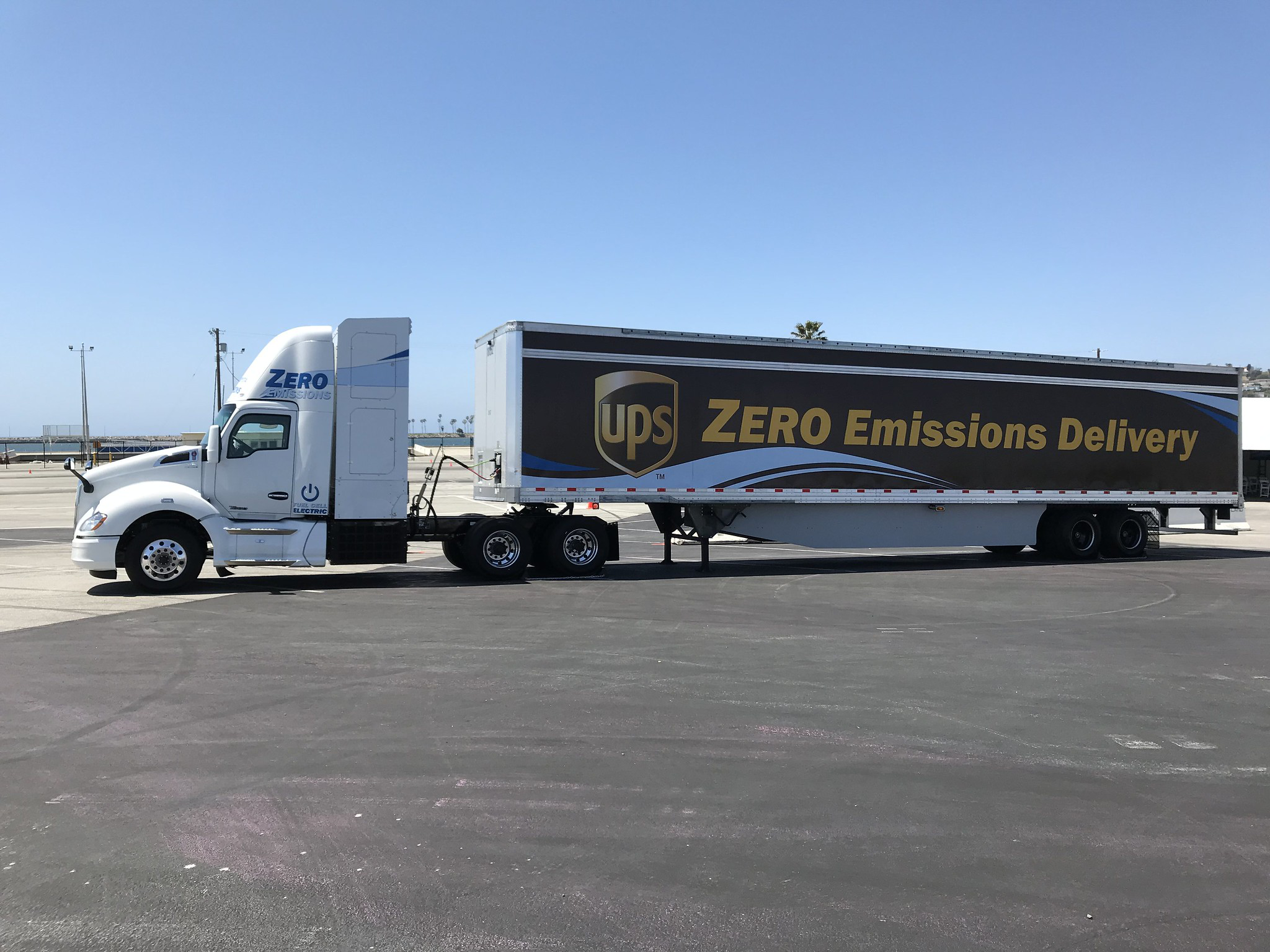Trucking in 2019: A look back the year’s top news and equipment and tech trends
CCJ Staff Commercial Carrier Journal 2019 12 29
As the sun sets on 2019, CCJ editors compiled a look back at some of the top trucking headlines from the year. Think we missed something? Drop a comment below or email us.
—

California became the first state in the nation to effectively forbid fleets from contracting with owner-operators. In a sweeping legislative package passed in September, California set into state law an effective prohibition of fleets contracting with owner-operators. The law has spurred fleets of all sizes to move away from the traditional owner-operator set-up, in which drivers who own their own rig lease their truck to a larger carrier and operate under their authority.
The groundwork was laid by the state’s Supreme Court in 2018 in the case of Dynamex v. Superior Court, which began the flight away from owner-operators.
—

Celadon was one of a few high-profile sudden fleet closures in 2019.
As economic growth slowed, a few high-profile fleet closures followed. After a hot run for carriers in 2017 and 2018, thanks to strong rates and tight capacity, a return to normal in 2019 took its toll on some in the industry. A few large fleets suddenly ceased operations, while other fleets shrunk their workforce.
However, the industry mostly remains on solid ground. Trucking-focused economists noted at September’s FTR Transportation Conference that market conditions for trucking are still “historically strong.” Likewise, in-depth reporting from CCJ in November concluded that, despite an uptick in fleet closures and other effects of the general economic slowdown, carriers mostly are still running profitably.
The largest of the fleets to go under this year was Celadon (No. 41 on the CCJ Top 250), which abruptly announced its closure on Dec. 9 with its filing for Chapter 11 bankruptcy. Celadon followed New England Motor Freight (previously No. 67), which announced its closure in February; Falcon Transport, which closed its doors in April; LME in July; and HVH in August.
Some other large carriers to cut jobs or business segments included Roadrunner, which downsized its dry van segment by closing five terminals and eliminating 450 positions and sold off its flatbed division in December; Stevens Transport, which closed its oilfield tanker fleet of 500-plus trucks; and Swift Logistics, a branch of Swift Transportation and the Knight-Swift conglomerate, which closed a warehouse facility in Pennsylvania and laid off 56 employees.
Among reasons for the closures and cutbacks were rising overhead costs, difficulty finding drivers, an automotive plant closure and more.
—
The U.S. DOT, for the first time in nearly 15 years, proposed significant changes to federal hours of service regulations. Published in August, the Federal Motor Carrier Safety Administration proposed a rule to allow drivers to pause their 14-hour clock, among other changes. Also, FMCSA Administrator Ray Martinez resigned in October.
—

Freightliner’s 2020 Cascadia became the first series production truck to come standard with Level 2 automation.
Advanced Driver Assist Systems (ADAS) took a notable step forward. Daimler Trucks North America in February unveiled its next generation Cascadia for model year 2020, which went into production this fall. The truck’s ADAS – which include Active Lane Assist, Adaptive Cruise Control (ACC) with full braking – enables SAE Level 2 automated driving and give the truck the distinction of becoming the first production model capable of such. Level 2 automation means the truck can accelerate, decelerate and steer independently.
Volvo Trucks North America rolled out an updated version of its Volvo Active Driver Assist platform (VADA) 2.0, an enhancement to the original VADA platform with the integration of radar and camera capabilities to help drivers maintain a safe following distance through alerts and improved traffic awareness, as well as emergency braking to reduce the risk of collisions. According to the National Highway Traffic Safety Administration, 94% of crashes are caused by human error and advancements made in these platforms will go a long way to dropping that figure in the years ahead.
—
Electrification continued to be an industry buzzword. While Tesla has barely mentioned its vaunted electric Semi since its debut two years ago, DTNA said it delivered this year about half of the 20 eCascadia and 10 medium-duty eM2s allotted to its Innovation Fleet partners. Two of the eCascadia recently reached 10,000 miles in real world testing.
—

Hydrogen-electric trucks have also consistently remained a headline maker. Cummins started development of its fuel cell capabilities more than 20 years ago and recently acquired Hydrogenics, a developer and manufacturer of hydrogen generation and fuel cell products. Cummins made an investment in Loop Energy, a fuel cell electric range extender provider and signed a memo of understanding with Hyundai to collaborate on hydrogen fuel cell technology across commercial markets in North America. Kenworth and Toyota Motor North America kicked off a collaboration to develop 10 zero-emission Kenworth T680s powered by Toyota hydrogen fuel cell electric powertrains. Kenworth’s assembly plant in Renton, Wash., has produced about half of them already.
DTNA CEO Roger Nielsen said in October his company planned to, by the end of the 2020s, “bring fuel-cell powered vehicles into series production,” and Nikola Motor Company – the unofficial grandfather of the hydrogen in trucking movement – held a hydrogen showcase this year near its Phoenix-area headquarters and just a few weeks ago, in partnership with Anheuser-Busch and BYD Motors, completed what is to believed to be the first-ever zero-emission commercial delivery in the brewer’s hometown of St. Louis.
—
Lastly, the ELD mandate fully took effect. Four years after FMCSA finalized a rule to mandate the use of electronic logging devices by nearly all truck drivers required to keep records of duty status, the mandate took full effect, Dec. 17.
With the mandate looming, many carriers in 2019 evaluated telematics vendors to find those who can best meet their technology needs. A major factor influencing technology decisions by fleets has been the sunsetting of 3G CDMA cellular networks. Many fleets were running AOBRDs with soon-to-be-outdated 3G technology in their trucks.
FMCSA’s proposed changes to hours-of-service rules also impacted fleet technology decisions. A study by EROAD found that a significant number of short-haul fleets plan to stop using ELDs if the proposal becomes law.
Another hot technology trend in 2019 was the use of machine learning technology in all levels of the supply chain, from shippers to 3PLs and carriers, to deliver instant freight matching recommendations. Developments on this front have leveled the playing field to give companies of all sizes new, affordable options to make better load planning decisions.
Trimble launched a new product that gives fleet customers using its transportation management software (TMS) platforms way to instantly see the best options for matching their loads with trucks.
Many freight matching technologies in the market are developed by companies who are funded by private equity investors. During the McLeod Software user conference in August, the president of the company, Tom McLeod, advised his customers to choose their vendors carefully. McLeod questioned if the level of private equity investment in transportation and other industries has created an economic bubble that could burst in 2020.
CCJ editors’ picks from 2019:
–Jason Cannon, Aaron Huff, Matt Cole and James Jaillet contributed to this report.
https://www.ccjdigital.com/trucking-in-2019-a-look-back-the-years-top-news-and-equipment-and-tech-trends/

